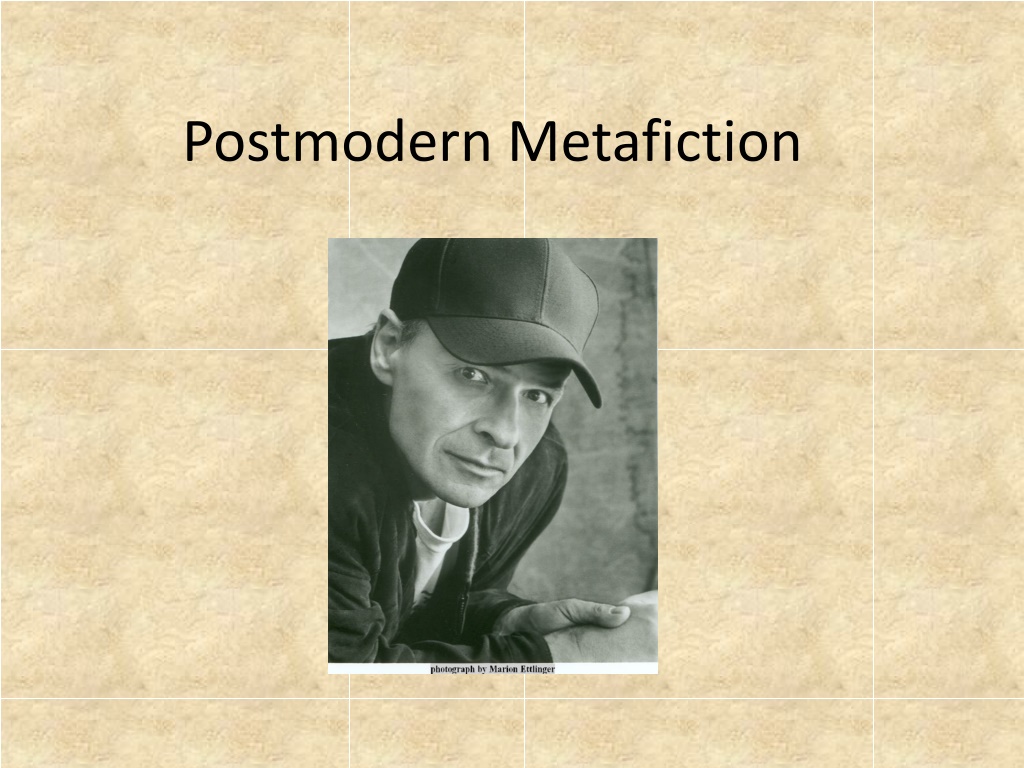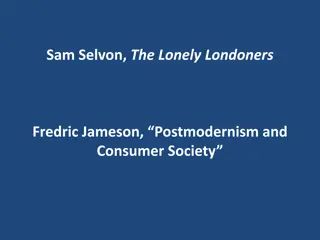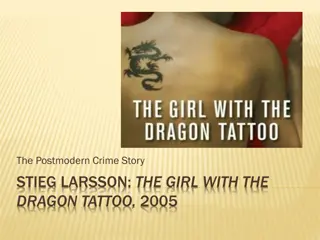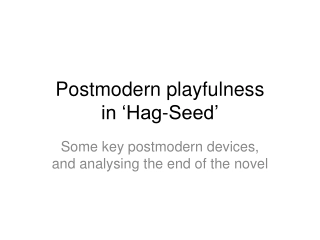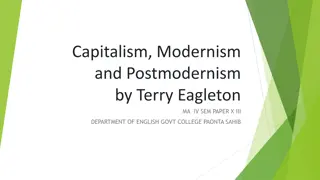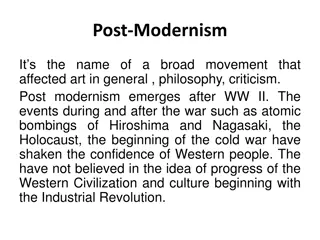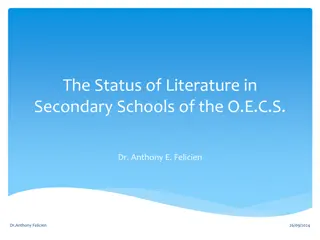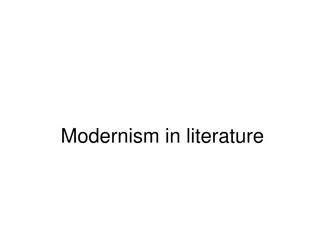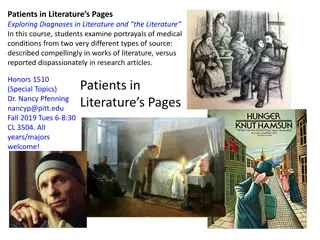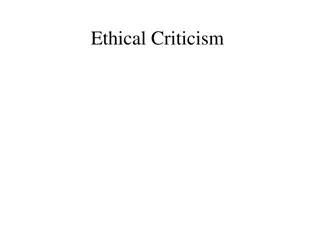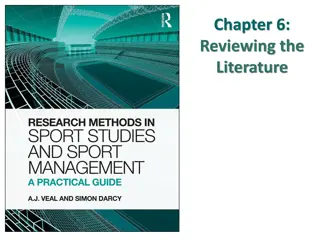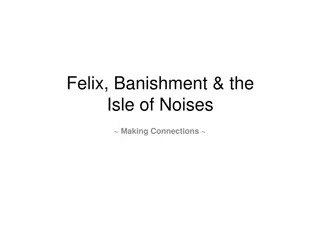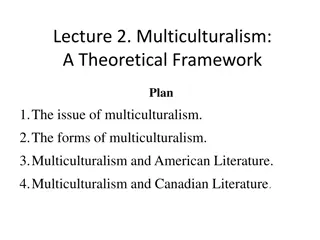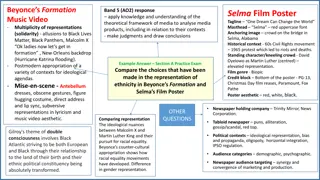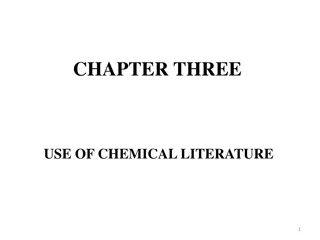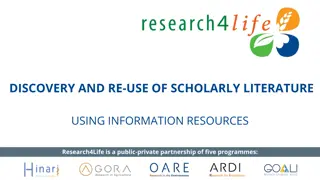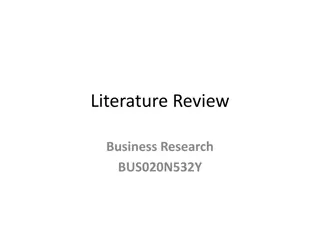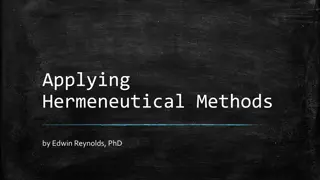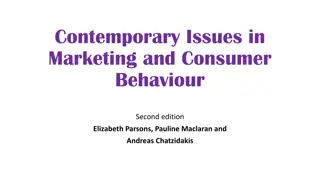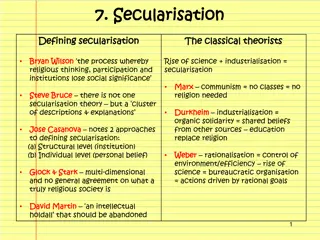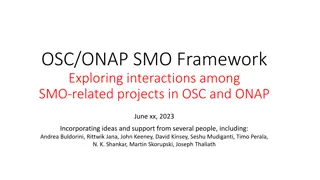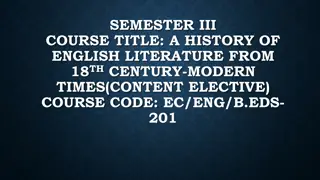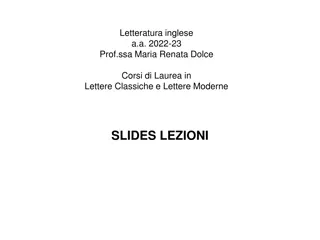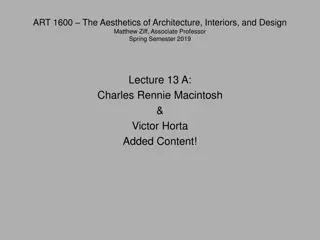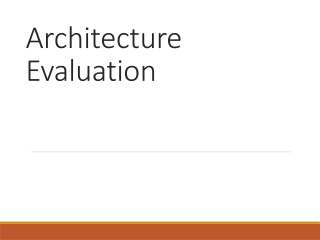Exploring Postmodern Metafiction in Literature and Architecture
Postmodern metafiction in literature and architecture challenges traditional storytelling and design by emphasizing artificiality and self-reflexivity. It delves into the construction of narratives and buildings, breaking the fourth wall to highlight the role of language and storytelling in shaping reality. Metafiction questions the boundary between fiction and reality, seeking to provoke thought on the nature of truth and the storytelling process.
Download Presentation

Please find below an Image/Link to download the presentation.
The content on the website is provided AS IS for your information and personal use only. It may not be sold, licensed, or shared on other websites without obtaining consent from the author. Download presentation by click this link. If you encounter any issues during the download, it is possible that the publisher has removed the file from their server.
E N D
Presentation Transcript
Postmodern Literature and Self- Reflexivity Postmodern literature often calls attention to its own artificiality, its own status as fiction So it pays attention to not just the story, but how the story is constructed makes the construction visible How to Tell a True War Story Often breaks the fourth wall
Georges Pompidou Centre, Paris Postmodern architecture sometimes does this as well.
Postmodern literature often about language and storytelling Because reality itself often seen as linguistically determined, language becomes extremely important Thus, often books about books, about language, about how language shapes and interacts with reality We call this characteristic metafiction
Metafiction Metafiction is a term given to fictional writing which self- consciously and systematically draws attention to its status as an artifact in order to pose questions about the relationship between fiction and reality. In providing a critique of their own methods of construction, such writings not only examine the fundamental structures of narrative fiction, they also explore the possible fictionality of the world outside the literary fictional text. --From Patricia Waugh, Metafiction: The Theory and Practice of Self-Conscious Fiction
Tim OBrien on The Things They Carried If there is a theme to the whole book it has to do with the fact that stories can save our lives . .. What I discovered in the course of writing this book is the reason I love story: not just for its titillation, its instance gratification of what next, what next, but for the livingness that s there as you read and that lingers afterward. Jake Barnes is alive for me. Though he is a fictional character in the taxicab at the end of The Sun Also Rises, he is alive in that cab with Brett. That s what I love about writing them and reading them that quality of immortality that a story is doesn t contain just is. My hope is that when you finish the last page of this book, or any book, there is a sense of having experienced a whole life or a constellation of lives; that something has been preserved which, if the book hadn t been written, would have been lost, like most lives are.
Metafiction Raises Questions about What s True, What s Real Indeterminacy No TRUTH, only truths Suspicion of history as TRUTH- -history becomes story Tim O Brien, from The Things They Carried: Absolute occurrence is irrelevant. A thing may happen and be a total lie; another thing may not happen and be truer than the truth (from How to Tell a True War Story ) Story-truth is truer sometimes than happening-truth (from Good Form )
